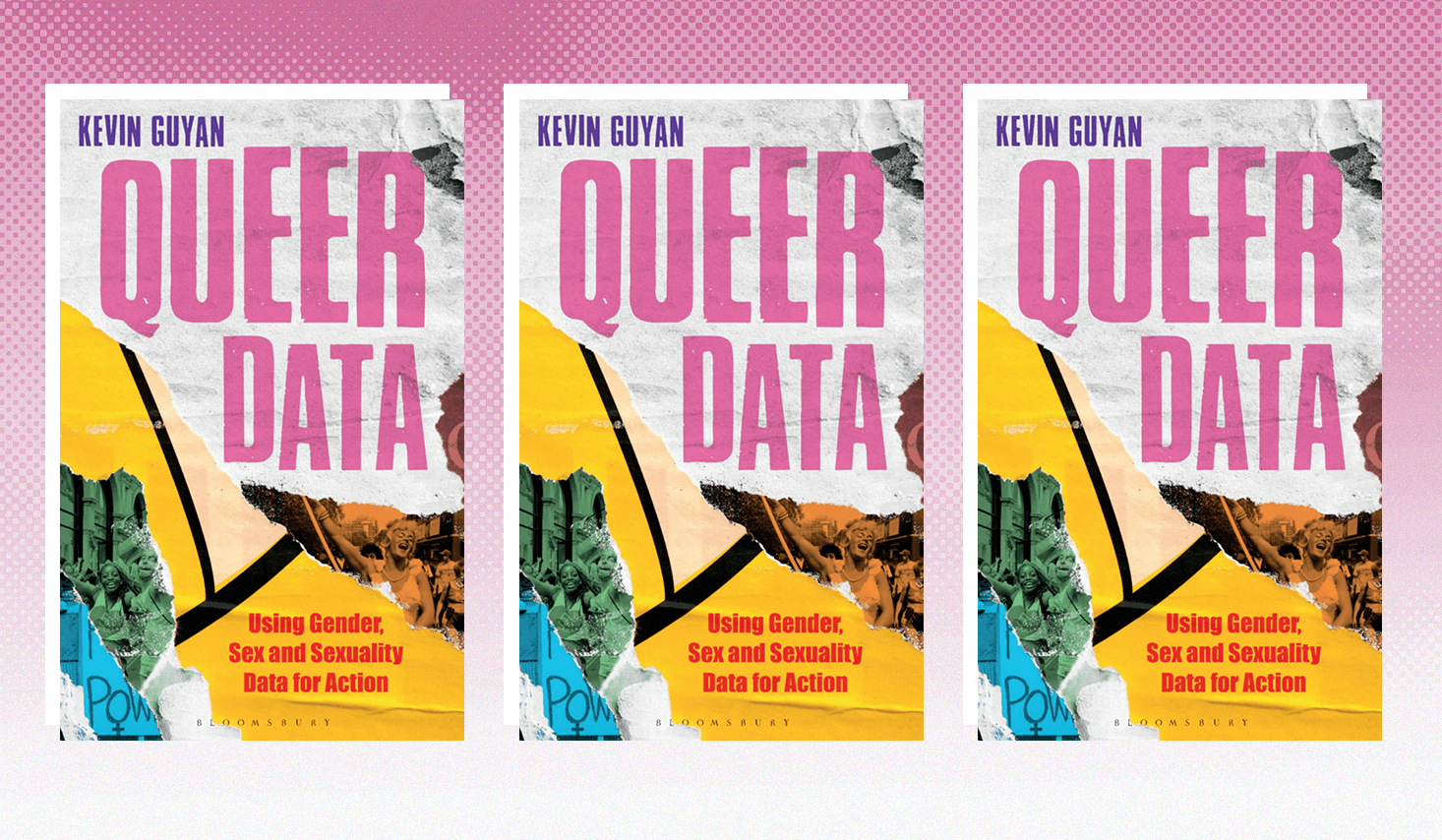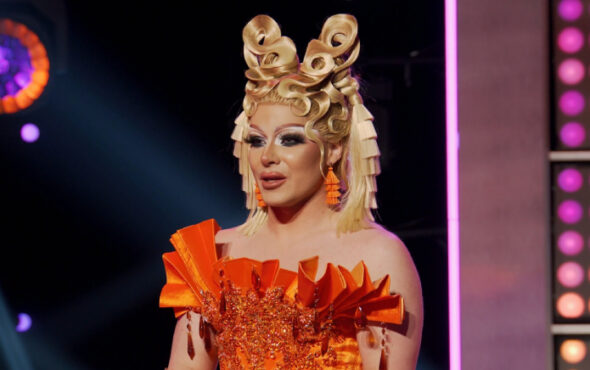
Data can be difficult to understand. Whether it’s attempting to analyse the numbers, unpacking the jargon or feeling overwhelmed with the general topic at hand, it makes sense why many of us might steer away from the stats. But, in his debut book, Queer Data: Using Gender, Sex and Sexuality Data for Action, Dr Kevin Guyan has been driven to bring the LGBTQ+ community closer to the abundance of data that surrounds them. Based in Scotland, the author hopes to convey an “accessible” book for “people to read and feel inspired”. Published under Bloomsbury, Guyan’s book boldly unites figures and activism to empower readers of how data can shape the world around us.
Following the exciting release, GAY TIMES sat down with the author over Zoom to hear more about the book and his data-driven message to the LGBTQ+ community.
What inspired the idea of writing a book solely focusing on the LGBTQ+ community and queer data?
The seed for Queer Data came from my work in Scotland around the census. The Scottish census is taking place in March 2022 and, for the first time, it will ask questions on sexual orientation and trans status or history. I was involved in the work around guiding politicians and policymakers on the design of those new questions. And in my work, I became increasingly sceptical of what was happening. On paper, it sounds great, but it became clear that there’s a lot of politics and biases about who should be counted and which identities were still hard to make sense of. A census shines a light on some parts of the LGBTQ+ community, but it also pushes some of the wider community further into the shadows and isn’t doing anything to capture those identity categories. I speak about diversity monitoring forms and work around administrative practices (applying for a passport, registering for your GP or applying to change the sex marker on your birth certificate), all of these practices are designed to empower some people and disempower others, and I hope that comes through in the book.
There’s been a growing political discussion associated with the labels the LGBTQ+ community use when exploring topics of sex, gender and sexuality. Did your research for Queer Data reveal any interesting insights?
I’ve seen a lot more interest in discussions about how we categorise to make sense of gender, sex and sexuality identities and terms like self-identification are more familiar with mainstream audiences. I would say for negative reasons, this moment has emerged with a lot of anti-trans rhetoric and anti-trans campaign groups have really brought to the fore the issues of identity categorisation. This is something you’re seeing in mainstream media such as what it means to self identify when completing a survey. These types of ideas are expanding further in society.
What I hope to do with the book is to ensure that we’re having the right conversations about these ideas. It’s not a conversation seen through an anti-trans lens; it’s a lens that is about what we can do with data so that it doesn’t force people into boxes. It’s not about policing how people identify but providing space for people to make sense of their own identity, even if it changes. We can do that with data, so we focus on the positives rather than a lot of the narrative, which is unfortunately very toxic and negative.

Queer Data explores the notion of ‘straight washing’. How would you describe the phenomenon and what it means for our community?
Straight washing is a term coined by scholars and academics which relates to what’s happened, historically, in the US censuses. People complete the census and data is then analysed and that can involve aggregating (the lumping together of two categories).
The cleaning of data can be quite problematic for LGBTQ+ communities. So, in the US example, people who marked themselves as being in a same sex relationship had their data entry changed so that they would be in an opposite sex relationship. This is a type of erasure of data after the point of collection – this is a historical example. A more relevant example is what can happen today around data analysis. In the book, I speak about three phases of data: the collection, analysis, and use or presentation of data.
There are a few dangers of the biases involved in data analysis. If you run a staff survey at your university and offer 20 different response options for sexual orientations that might seem really inclusive. But, when comes to analysis, if the team doing the analysis lump all those categories together, they’re making a decision and a judgement about the data, which the person who shared didn’t necessarily agree with. We see that a lot in data, more broadly, the aggregation of categories and lumping together of identities. It’s something to be mindful of when working with data around gender, sex and sexuality. It’s about pulling back the curtain and thinking about what happens after data collection and who’s making these decisions.
When people in power don’t want something to change, they’ll commission a study or they’ll commission a research exercise and we saw this a lot with things like the reform of the Gender Recognition Act.
Can you share one of the lessons you learned while writing Queer Data?
For me, one of the harder arguments in the book is the value of data for improving and changing LGBTQ+ lives. There are many powerful uses of data in regards to changing LGBTQ+ lives for the better, whether we’re looking for advances in healthcare or housing, but at the same time, there are limitations to that approach. In some areas, we have maybe reached a saturation point that we have enough evidence of the problems that are facing LGBTQ+ communities.
Increasingly, when I was writing the book, I did become sceptical about this demand for more and more data, and seeing it almost as a distraction technique. When people in power don’t want something to change, they’ll commission a study or they’ll commission a research exercise and we saw this a lot with things like the reform of the Gender Recognition Act. We’re seeing this with the efforts to ban conversion therapy. There has to be a point where we don’t allow those in positions of power to demand evidence and reach a point where they do something about the issues.
How much data do we need to collect before somebody says you have enough and we'll now take action?
Were you surprised by any of the figures or data sets you uncovered while working on Queer Data?
There’s a worry for me, when we think about the data on LGBTQ+ communities is that the data is all about problems. Whether it’s conversion therapy, hate crime, bullying, harassment, or suicide, if this is all the data that we’re collecting about LGBTQ+ lives, my worry is that the data might feed into a damage or deficit narrative, and not really paint the full picture. There is a worry about this focus on data to prove a problem and how high is that burden of proof? How much data do we need to collect before somebody says you have enough and we’ll now take action? That’s something for us all to be mindful of in engaging in politics around LGBTQ+ rights.
What do you hope for audiences to take away from reading Queer Data?
I hope people with the book feel emboldened to be involved in these conversations. My main hope for the book is that people don’t see data as something too difficult or too dense because they’re not from a maths background or somebody who’s involved in academic work. All of these issues are relevant to everyone’s lives, regardless of where they’re working or based. For me, an inability to understand isn’t the fault of the reader, but it’s actually the person explaining the problem or the subject. These things affect so many different areas of our lives, it’s vital that people feel able to engage and feel empowered to participate. My hope is to write something quite accessible which opens up new ideas, new ways of thinking and asking questions.



